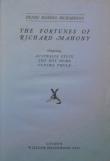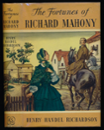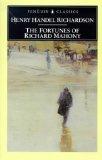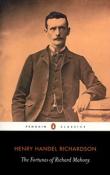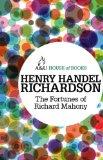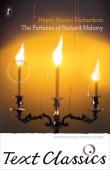The Fortunes of Richard Mahony was 'first published as a sequence. Australia Felix, the first volume, which covers twelve years of Richard Mahony’s life from the early 1850s, was published in 1917; The Way Home, which deals with his subsequent eight years, appeared in 1925; and Ultima Thule, the final volume covering his last four years, in 1929. The novel was first published as a trilogy in 1930.'
Australia Felix 'begins the story of Richard Mahony, a 28-year-old medical graduate of Edinburgh University and now the keeper of a general store in Ballarat'. Part one of the novel 'follows Mahony’s career until his marriage; the second part deals with the Eureka Stockade, the growth of the varied society of Ballarat and legal hearing in Melbourne'. It 'concludes with Mahony’s decision to start a practice in Ballarat instead of returning to England'. In parts three and four, 'Richardson extends her panoramic picture of a dynamic colonial society in which individuals are subject to great reversals or advances of fortune'.
The Way Home begins with Mahony’s 'arrival in England and concludes with his final, second return to Australia, as a ruined man. In the intervening years he grows disillusioned with English society, returns to Australia to find his investments have made him suddenly rich, attempts to settle into the wealthy community of Melbourne and becomes the father of three children'. His sojourn in England leads to the discovery that he is uncomfortable with the ‘offensive and cramping’ English social hierarchy.
Ultima Thule picks up the story with Mahony’s 'return to Australia, his attempts to establish himself as a medical practitioner, first in Melbourne and then at Barambogie, a small town in northern Victoria'. When Mahony’s skills as a doctor as increasingly questioned, the family moves to the coast and later to Gymgurra where Mahony’s wife, Mary, 'secures a position as postmistress'. Mahony is moved to a private nursing home, then to a government asylum and finally returns home. He is 'devotedly cared by Mary, until paralysis incapacitates his body. After his death he is buried in the local cemetery, within sound of the sea'.
Source: The Oxford Companion to Australian Literature. 2nd. ed. Melbourne: Oxford University Press, 1994: 294-295.
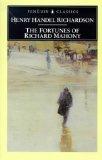 638618891775411741.jpg
638618891775411741.jpg
 The Fortunes of Richard Mahony : Comprising Australia Felix, The Way Home, Ultima Thule
selected work
historical fiction
The Fortunes of Richard Mahony : Comprising Australia Felix, The Way Home, Ultima Thule
selected work
historical fiction

